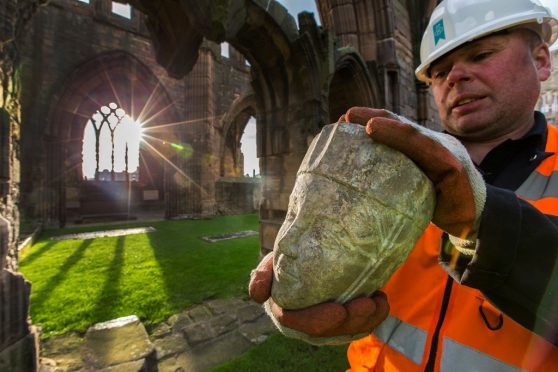Ancient carvings which lay buried in the ruins of Elgin Cathedral for centuries are to go on show for the first time in 20 years.
Carved stones which were fashioned to depict human faces, plants and animals during medieval times are now being returned to the Lantern of the North.
The “Elgin stones” are believed to have lain buried since the 16th century, and were only uncovered in the 1880s.
Top Scottish conservation and research experts spent much of last year cleaning and studying the sculptures at Historic Scotland’s Edinburgh base.
Historians say the “wonderful, crisp carvings” offer a fascinating insight into the early development of the 13th century landmark.
They are now being hoisted into place in the cathedral’s towers to form part of an exhibition that will open to the public over Easter weekend.
The display will aim to tell the story of the cathedral’s early days by exploring the lives of those who built and used it.
Fiona Fleming, Historic Environment Scotland’s interpretation manager, said: “The carved stones lay buried amidst the ruins until the 1800s when Elgin shoemaker John Shanks became the first keeper and watchman of the cathedral.
“He began to clear away some of the rubble uncovering wonderful, crisp carvings that had been buried for centuries.
“By studying the stones we have been able to understand more about the cathedral’s construction and development, its builders and benefactors, and what it might have meant to those who walked through its doors.”
Academic experts have worked to decode the messages within the carvings, which range from flora, fauna and funny faces to mystical beasts and heraldic motifs.
The carvings will be lit up using an all-LED lighting scheme to allow visitors to view the Elgin stones “in never-before-seen detail”.
Many of the ancient stones were too big to go up the towers’ narrow spiral stairs.
Instead, a scaffold was built around each tower so that the stones could be carefully lifted one by one into position.
Elgin Cathedral has a dramatic history, managing to survive a huge fire and military onslaughts between the 13th and 15th centuries.
It was only after the reformation in 1560 that it slid into disrepair.
